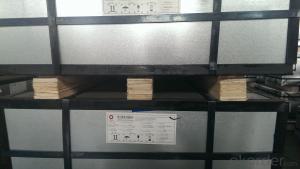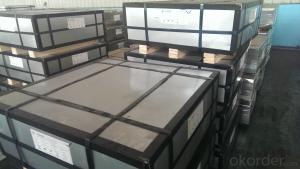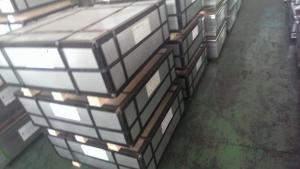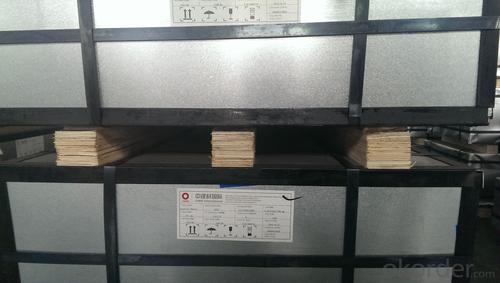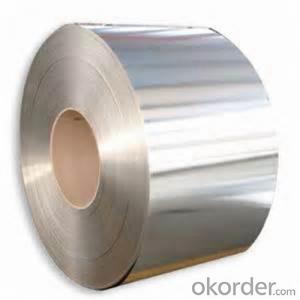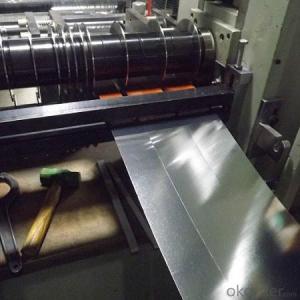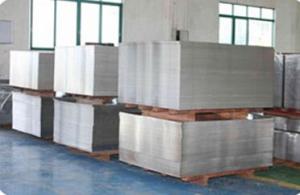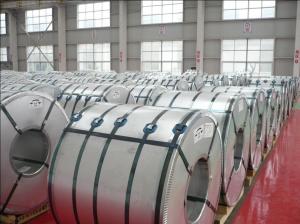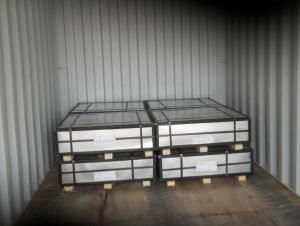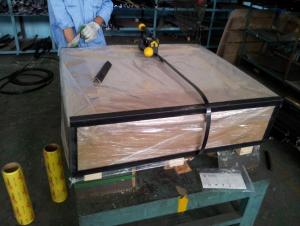Prime Quality Tinplate and TFS for Tin Cans
- Loading Port:
- Shanghai
- Payment Terms:
- TT OR LC
- Min Order Qty:
- 25 m.t.
- Supply Capability:
- 25000 m.t./month
OKorder Service Pledge
OKorder Financial Service
You Might Also Like
Specification
1.Structure of Prime Quality Tinplate and TFS for Tin Cans Description
Also known as chromed steel, tin-free steel (TFS) is obtained by coating the metal base (low-carbon steel) with an ultra-thin layer of metallic chrome and then with a chromium oxide layer.
2.Main Features of the Prime Quality Tinplate and TFS for Tin Cans
Appearance – Tinplate is characterized by its beautiful metallic luster. Products with various kinds of surface roughness are produced by selecting the surface finish of the substrate steel sheet.
Paintability and printability – Tinplates have excellent paintability and printability. Printing is beautifully finished using various lacquers and inks.
Formability and strength – Tinplates have got very good formability and strength. By selecting a proper temper grade, appropriate formability is obtained for different applications as well as the required strength after forming.
Corrosion resistance – Tinplate has got good corrosion resistance. By selecting a proper coating weight, appropriate corrosion resistance is obtained against container contents. Coated items should meet 24 hour 5 % salt spray requirement.
3.Prime Quality Tinplate and TFS for Tin Cans Images
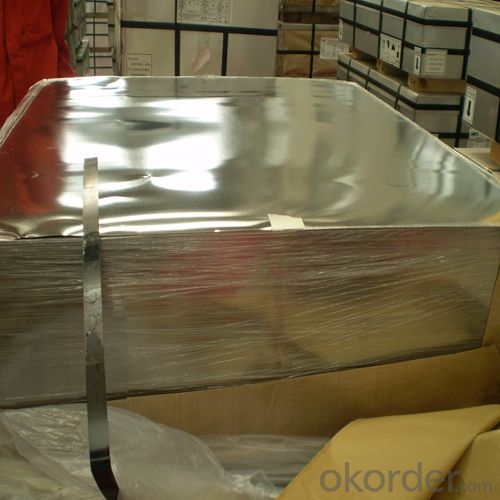

4.Prime Quality Tinplate and TFS for Tin Cans Specification
Specification of :
Standard: ISO 11949 -1995, GB/T2520-2000,JIS G3303,ASTM A623, BS EN 10202
Material: MR,SPCC
Thickness:0.15mm - 0.50mm
Width: 600mm -1150mm
Temper: T1-T5
Annealing: BA & CA
Coil Inner Diameter: 508mm
Weight: 6-10 tons/coil 1~1.7 tons/sheets bundle
Passivation:311
Oil: DOS
Surface: Finish,bright,stone,matte,silver
5.FAQ of Prime Quality Tinplate and TFS for Tin Cans
- What is tinning and how does it work?
Tinning is the process of thinly coating sheets of wrought iron or steel with tin, and the resulting product is known as tinplate. It is most often used to prevent rust.
- Do you only have prime quality tinplate?
We can supply both prime and second quality tinplate.
- Q: Why do tin tins rust easily when they are opened?
- It turned out to be sealed and oxygen has been transpiring. When opening is oxidized (Fe2o3), there is rust.
- Q: How is tinplate used in the manufacturing of electrical components?
- Tinplate is commonly used in the manufacturing of electrical components due to its corrosion resistance and excellent electrical conductivity. It is often formed into thin sheets and utilized as a protective coating on copper or other metal surfaces to prevent oxidation and ensure prolonged durability. Additionally, tinplate can be shaped into intricate forms, such as cans or enclosures, to house electrical circuits and provide insulation. Overall, tinplate plays a crucial role in safeguarding the functionality and longevity of electrical components.
- Q: Can tinplate be shielded?
- With the production of mobile phone shielding materials I know the ocean (Cupronickel), copper, tin phosphor bronze (TIN), these three kinds of material weldability are very good, because the surface of tin!
- Q: What are the main differences between tinplate and tinplate laminates?
- The main difference between tinplate and tinplate laminates lies in their composition and structure. Tinplate is a steel sheet coated with a thin layer of tin, providing it with corrosion resistance and enhanced durability. On the other hand, tinplate laminates are constructed by bonding tinplate with other materials, such as plastic or paper, for additional functionalities. These laminates offer the combined advantages of tinplate and the secondary material, making them suitable for various packaging applications.
- Q: What are the advantages of using tinplate for construction materials?
- One of the main advantages of using tinplate for construction materials is its exceptional durability and corrosion resistance. Tinplate is a steel sheet coated with a thin layer of tin, which provides a protective barrier against rust and other forms of corrosion. This makes it ideal for construction applications where exposure to moisture or extreme weather conditions is a concern. Additionally, tinplate is lightweight and easy to work with, allowing for efficient installation and reducing the overall weight of the structure. Its aesthetic appeal, versatility, and recyclability are also notable advantages that make tinplate a preferred choice for various construction needs.
- Q: How is tinplate used in the automotive industry?
- Tinplate is commonly used in the automotive industry for various applications such as body panels, fuel tanks, and exhaust systems. It provides a durable and corrosion-resistant coating that helps protect the metal from rust and other environmental factors, ensuring the longevity of the vehicle. Additionally, tinplate can be easily formed and shaped, making it an ideal material for producing intricate automotive components.
- Q: How does tinplate packaging handle exposure to different chemicals?
- Tinplate packaging is known for its excellent resistance to various chemicals. It can handle exposure to different chemicals without any significant adverse effects, making it a reliable choice for packaging materials.
- Q: How is tinplate tested for quality control?
- Tinplate is tested for quality control through various methods including visual inspection, measurement of coating thickness, adhesion testing, and corrosion resistance testing.
- Q: What are the differences in the corrosion behavior of two ferrous iron products?
- There are other statements, such as China used this lamp tin plate made of kerosene, shaped like a horse, so called "tin".
- Q: What are the causes of tinplate rusting and how to prevent them?
- The tin surface of the iron sheet is injured and exposed during the machining process to promote corrosion.Prevention: 1, not coated iron sheet, coated with oil after plating thickening. Effectively prevent water invasion and reduce damage to the process.2 can be painted on the iron sheet of appropriate paint, blocking the impact of corrosive substances.
Send your message to us
Prime Quality Tinplate and TFS for Tin Cans
- Loading Port:
- Shanghai
- Payment Terms:
- TT OR LC
- Min Order Qty:
- 25 m.t.
- Supply Capability:
- 25000 m.t./month
OKorder Service Pledge
OKorder Financial Service
Similar products
Hot products
Hot Searches
Related keywords
